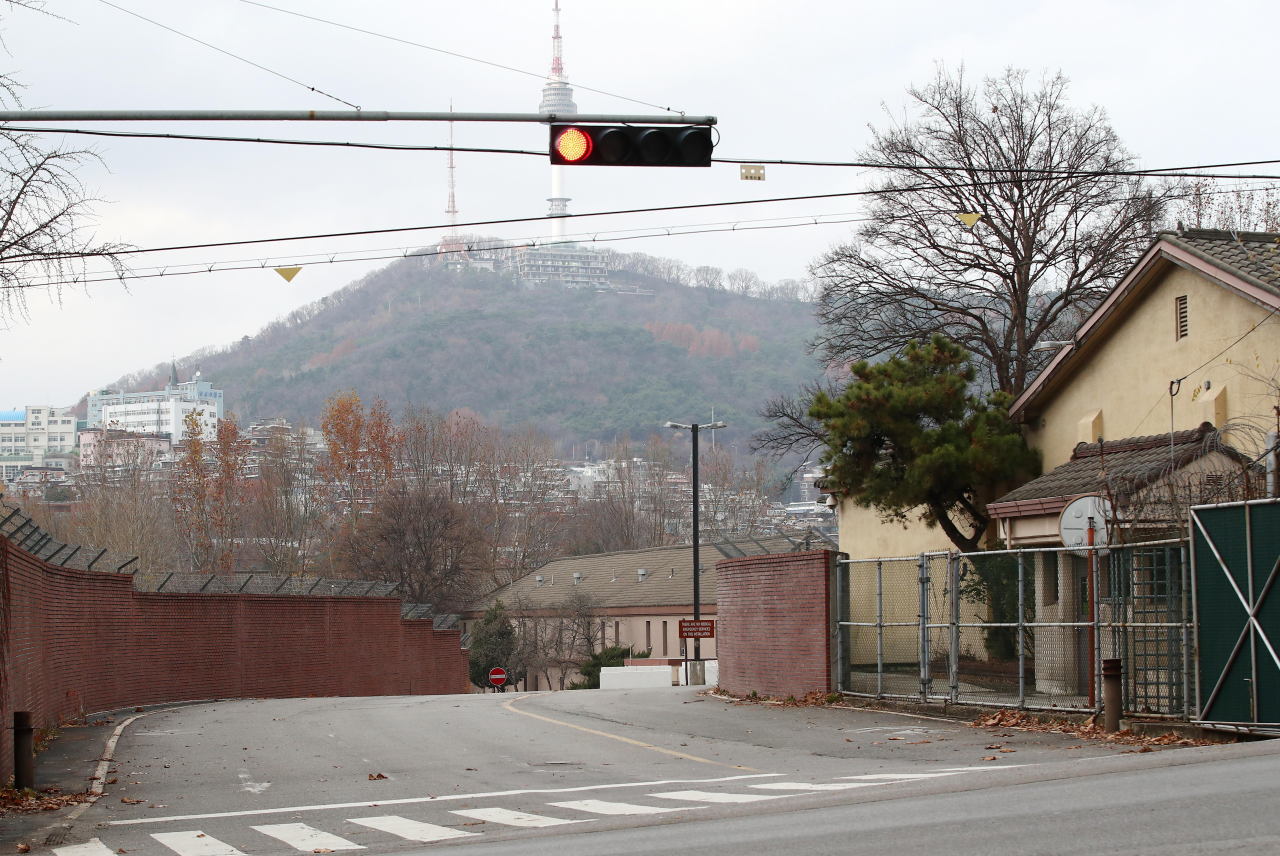The United States returned 12 military sites that were controlled by its forces to South Korea on Friday, in a major handover that included the Yongsan base in central Seoul for the first time.
Following a drawn-out return process due to disputes over environmental cleanup and other issues, the allies finalized the handover at a regular joint meeting of the Status of Forces Agreement, which stipulates legal responsibility of the 28,500-strong US forces stationed here.
The 201st SOFA meeting, which was held virtually Friday, was led by Ko Yun-ju, director general of the North American Affairs Bureau of the Foreign Ministry, and his counterpart Lt. Gen. Scott L. Pleus, US Forces Korea deputy commander.
The two sides, however, failed to settle who would shoulder the costs for environmental cleanups of contaminated soil and other environmental pollution left behind by the military, as well as how such cleanup efforts would be conducted.
But Seoul and Washington agreed on the transfer because “further delays aggravate the economic and social challenges of the local communities surrounding the camps and that the return process should be expedited,” according to the joint statement.
Two plots in Yongsan Garrison, the former local US military headquarters before its relocation to Pyeongtaek in 2018, was included in the handover for the first time since American troops arrived in the area in 1945 at the end of World War II. Before that, Yongsan was a garrison for foreign forces starting as early as in the 19th century, including Japanese troops during the colonial era of 1910-45.
Seoul plans to turn the swath of land into a national park resembling New York’s Central Park.
Five other sites in Seoul, including Camp Kim, the Far East District Compound, Seobinggo Compound, Niblo Barracks and the Eighth Army Retreat Center, were among the returned sites.
Friday’s handover also included three sites in Gyeonggi Province -- Camp Jackson in Uijeongbu, Camp Mobile in Dongducheon and Sungnam Golf Course in Hanam -- as well as the Camp Walker heliport in Daegu, Pilsung Air Range in Taebaek, Gangwon Province, and the Commander Naval Forces Korea Detachment in Pohang, North Gyeongsang Province.
In total, the returned area is around 1.45 million square meters.
The two sides agreed on the handover on the condition that they continue discussion on responsibilities for remediation of the sites, ways to enhance the environmental management of installations currently under USFK control and other revisions of SOFA-related documents, according to officials.
The South Korean government will bear the costs for cleanup of the sites for now, as it did in December 2019 when four bases were returned to Korea, and will continue to discuss payment with the US. The decontamination process is expected to take more than two years.
But it is still unclear whether Seoul can demand Washington pay, due to a lack of specific regulations that stipulate the level of pollution and responsibility for the cleanup, observers say.
Since the early 2000s, the two countries have agreed to transfer the US sites back to Korea, but the process had been slow due partially to the handling of polluted soil. With the latest transfer, a total of 68 out of the promised 80 sites have been returned to Korea.
Choi Chang-won, first vice minister of government policy coordination, said discussions are underway on the potential return of the remaining 12 sites, which includes the bulk of the Yongsan Garrison.
By Ahn Sung-mi (
sahn@heraldcorp.com)








![[Today’s K-pop] Blackpink’s Jennie, Lisa invited to Coachella as solo acts](http://res.heraldm.com/phpwas/restmb_idxmake.php?idx=644&simg=/content/image/2024/11/21/20241121050099_0.jpg)